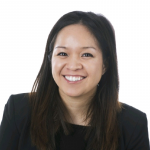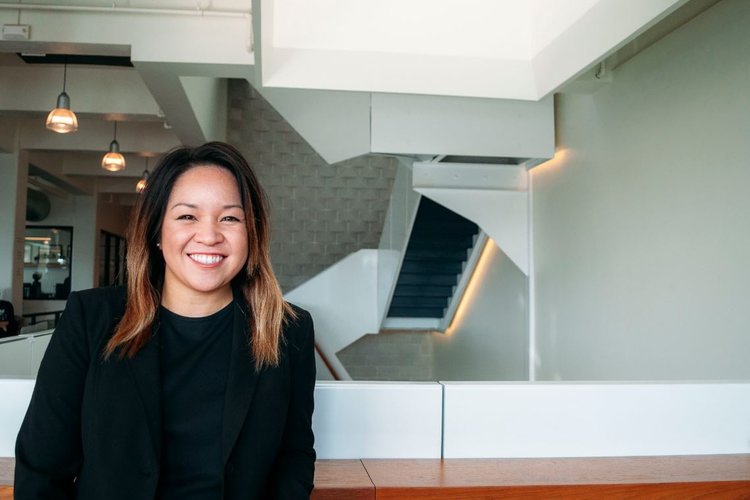Look Book Issue 3 | Be Well 20/20 | Diversity + Inclusion
SAMANTHA McCLOUD: EQUITY, DIVERSITY + INCLUSION ADVANCES ALL OF US
Within every built space there exists a unique community of people with diverse characteristics who are linked by social ties, share common perspectives and engage in joint action and experiences in shared settings or locations.1 We are naturally conscience of our individual wellbeing, though sometimes overlook the value of our immediate and peripheral relationships. How we interact with each other directly impacts our cognitive and emotional wellbeing. Having a sense of belonging, purpose and value among our peers creates a stronger community and culture. It is important for companies to understand how they can actively foster and support equity, diversity and inclusion in their business’s foundation. Samantha McCloud, Architect at GastingerWalker’s Chicago office, shared her journey in becoming the company’s Director of Community Involvement, Diversity & Inclusion.
While the past year has challenged our emotional resilience in so many ways, it has also significantly expanded our awareness and capacity to empathize and care for one another. People are engaging in vulnerable conversations with courage, openness, and compassion in greater numbers and with greater enthusiasm. As the Director of Community Involvement, Diversity & Inclusion at GastingerWalker, I am responding to more and more equity, diversity, and inclusion (EDI) inquiries on best practice guidance and examples of tangible results. However, EDI is not a one size fits all solution. EDI success takes time and intentional thought.
I advocate for EDI through aspirations to activate everyone – individuals of any age, of any gender identity, of any ethnicity/heritage/culture, family structure, educational background, health and ability, geographic location, the list of identity perspectives goes on. Acknowledging and understanding one’s own experiences is the foundation for empowering oneself and one’s company to lead equitable, diverse, and inclusive workplaces that thrive.
EDI advances all of us. EDI is not a destination but the strategy to reach our goals. EDI is not the finish line, but the actions and decisions that guide how we perform.
With workforce and community demographics broadening, EDI recruitment and engagement initiatives are moving into the forefront of industry EDI goals. The list of best practices is extensive and constantly expanding. Moving into implementation is complex and challenging. Terminology and trends change and evolve quickly. It’s easy to feel overwhelmed when asking: “Where do I start?”
For me, when first learning about EDI, I asked the same question: “Where do I start? I am an architect. My training is in architecture. I’m from the Midwest, not exactly a place known for its demographic diversity… Where do I start if I want to make a difference in the workplace? Where do I start if I want to make a difference in the industry?” Overwhelmed with approaches and ideas after spending much time researching and consuming information. Eventually, one day I just got started. Getting started involved meeting a lot of new people, having tough conversations, and speaking up to share my advocacy at my company and in the community. Through doing EDI work over time, I learned a lot about myself and reflected on how I learn and interact with others. Through doing the work, I realized I had a passion for EDI long before I knew what it was… because I always had a curiosity and a passion for people.
Through doing the work, I realized I should have been asking not “Where do I start, but where did I start?” This is the question I encourage others to be asking themselves as well.
Consciously or unconsciously, we have always been engaged with equity, diversity and inclusion. Consciously, I first learned about EDI as a college student when I attended a portfolio review event hosted by a local professionals’ group called Women in Design. I met amazing people at the portfolio review – several of which I consider mentors and friends today. Those conversations were the first conversations about EDI in the workplace that I had been exposed to and motivated me to continue learning about EDI with others. Through years of partnership work with several local, national and international organizations, producing EDI research and publications, podcasts, survey reports, attending national conferences and workshops to hosting national conferences and workshops, I expanded the conversation way beyond what I could have foreseen and I continue to learn more and more….and realize with more and more confidence that I have always been engaged with EDI, way before those first conversations as a student. “Where did I start?” is the question that guides me to reflect on my identity perspective. It guides my voice to share as well as my curiosity to learn from others.
Since opening in 1981, GastingerWalker has pursued projects and clients with a relationship mindset, putting trust and integrity at the heart of how we do work. This approach to service is supported through intentionality in our workplace culture. Our workplace culture prompts how our project teams communicate, engage and design. As Director of Community Involvement, Diversity & Inclusion, my role initially focused on highlighting the many existing strengths of GastingerWalker – what attracted me to the firm upon graduation from Kansas State University and the opportunities that I have experienced that allow me to expand my contributions to the team’s success. However, now in addition to celebrating our successes, I also use research to identify opportunities to do better. My position endorses individuals to be authentic in their perspectives, to seek outside inspiration, and to be confident in their value.
At GastingerWalker we celebrate the conviction that people matter. Healthy professional relationships matter. They matter for personal well-being. They matter for business. They matter for opportunity. Relationships matter for design. Professional excellence is about caring about our work, and caring comes from connecting with others.
When pursuing experiential outcomes for the individuals’ in our spaces and about the relationships our projects have with their neighborhoods, the conversation becomes much more intimate and human-centered. In our design process, we pursue experiential inclusive outcomes through engaging in community outreach and approaching problem-solving with a low-ego attitude to learn and to listen. Furthermore, the firm makes intentional effort to support EDI in language and in practice through two-way communication, flexibility, transparency, internal pay audits, bi-annual reviews, mentorship and social participation from all levels of experience. We believe people at all career levels perform better, connect better, and are happier when they feel seen and appreciated for their contributions as well as supported to pursue learning and growth.
Inclusion and engagement are proactive, not reactive. Differences can be magnetic, instead of polarizing. Openness can create opportunity. Through my engagement, I’ve identified that the core of the EDI conversation is simply the pursuit of opportunity: individuals seeking equal access to career growth, firms seeking talent, business developers seeking client growth, and designers seeking understanding on how design can better serve our increasingly diverse and globalized society.
We all have something to learn and benefit from one another. It is important to approach any EDI goal with this intention of “us” and a persevering attitude of “let’s do this work together”.
- MacQueen KM, McLellan E, Metzger DS, et al. What is community? An evidence-based definition for participatory public health. Am J Public Health. 2001;91(12):1929-1938. doi:10.2105/AJPH.91.12.1929
Special thank you to Samantha for taking the time to participate in our Be Well 20/20 Look Book!

GastingerWalker&
FOR MORE OF OUR BE WELL 20/20 LOOKBOOK, CLICK HERE!

